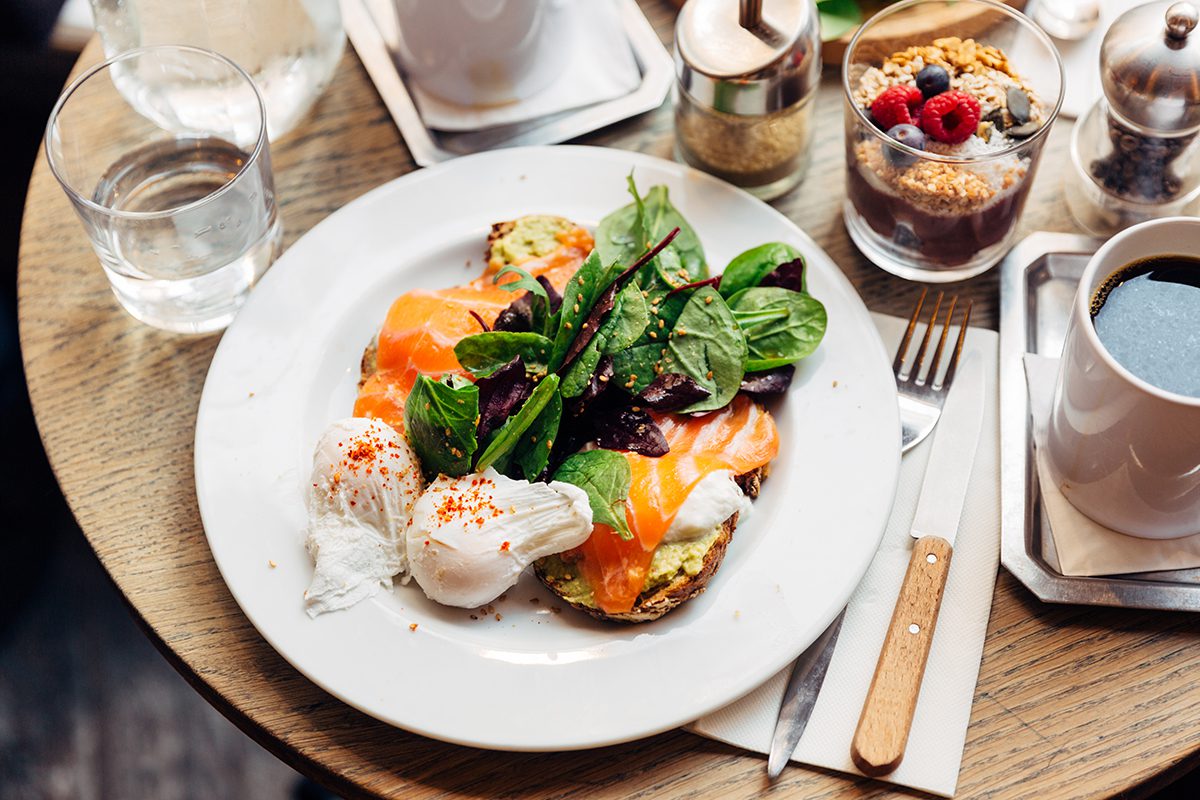6 Tips for Eating Out with Diabetes

2. Be a menu sleuth.
Pop quiz: Which has more carbohydrates, miso salmon or herb-crusted salmon? If you peeked at the Cheesecake Factory’s online menu,1 you might be surprised by the answer: The herb-crusted (as in, breaded) salmon has less than half the carbs of the miso option.
The lesson here? “Spend a few minutes looking at the menu before you go to the restaurant to map out an informed plan,” says Smith, “Many restaurants share their nutrition information online. Use that (or the meal descriptions) to think through your options at home with a clear mind. That way, by the time you’re hungry and at the restaurant, you can stick to your plan and beat the urge to splurge.”
3. Make a portion plan.
Food portions at restaurants tend to be larger than what you’d dish up at home, according to the USDA. That’s probably not news if you’ve ever been served a heaping pile of pasta or tower of fries. Still, even knowing it’s too much food, it’s easy to overeat when it’s right in front of you.
The key is to be intentional about how much you eat. Decide, for instance, that half a burger plus a side salad is ideal for your meal. Or aim to eat 1 cup of cooked pasta, rather than the entire plate. “At a restaurant, you’re probably not going to pull out your measuring cups,” says Smith, “But your hand can act as a decent guide: A closed fist is roughly the same amount as 1 cup of grains, veggies, or fruit. The palm of your hand is about half a cup.”
Worried you’ll be tempted to eat more than you want? Ask your server to wrap up half your meal before it even hits the table. Or if that feels weird, bring a to-go container with you and do it yourself.2
4. Beware of hidden sugars.
You probably know that the dessert menu is sugar central. But you might not realize that many sauces and other condiments can be loaded with added sugars as well. Each tablespoon of ketchup, for instance, has roughly 5 grams of carbohydrates. That can quickly add up! Smith suggests asking for all sauces, dressings, and condiments on the side so you can better control how much you eat. Also, embrace lower-sugar condiments such as mustard, salsa, and hot sauce.
Keep hidden sugars in mind when reading the menu as well. Red-flag words2 include:
BBQ
Glazed
Sticky
Honey
Teriyaki
If a dish has one of those words in it, ask for more details about how it is made. Or think about having a smaller portion.
5. Remember that sharing is caring.2
Having diabetes doesn’t mean entire sections of the menu are completely off-limits. But it might mean having just a few bites of an appetizer or dessert rather than the whole thing. Splitting with a friend or the entire table is an easy way to indulge without overdoing it. And even if your dinner dates aren’t managing diabetes, they might appreciate that splitting means savoring a dish in a healthier way.
6. Order alcohol with intention.3,4
Not all drinks are created equally. Wine and straight spirits contain almost no carbohydrates. But cocktails such as bloody marys, margaritas, and pina coladas can be sugar bombs. A pina colada, for example, can have 35 to 40 grams or more of carbohydrates. It’s also important to know that alcohol can mess with judgment. That can make it harder to stick to your eating intentions.
If enjoying an alcoholic drink is important to you, pick a drink that fits within your eating plan. Then switch to a no-carb or very low-carb alternative, such as seltzer with a lemon wedge. That way you can keep the festivities going without derailing your blood sugar balancing goals.







